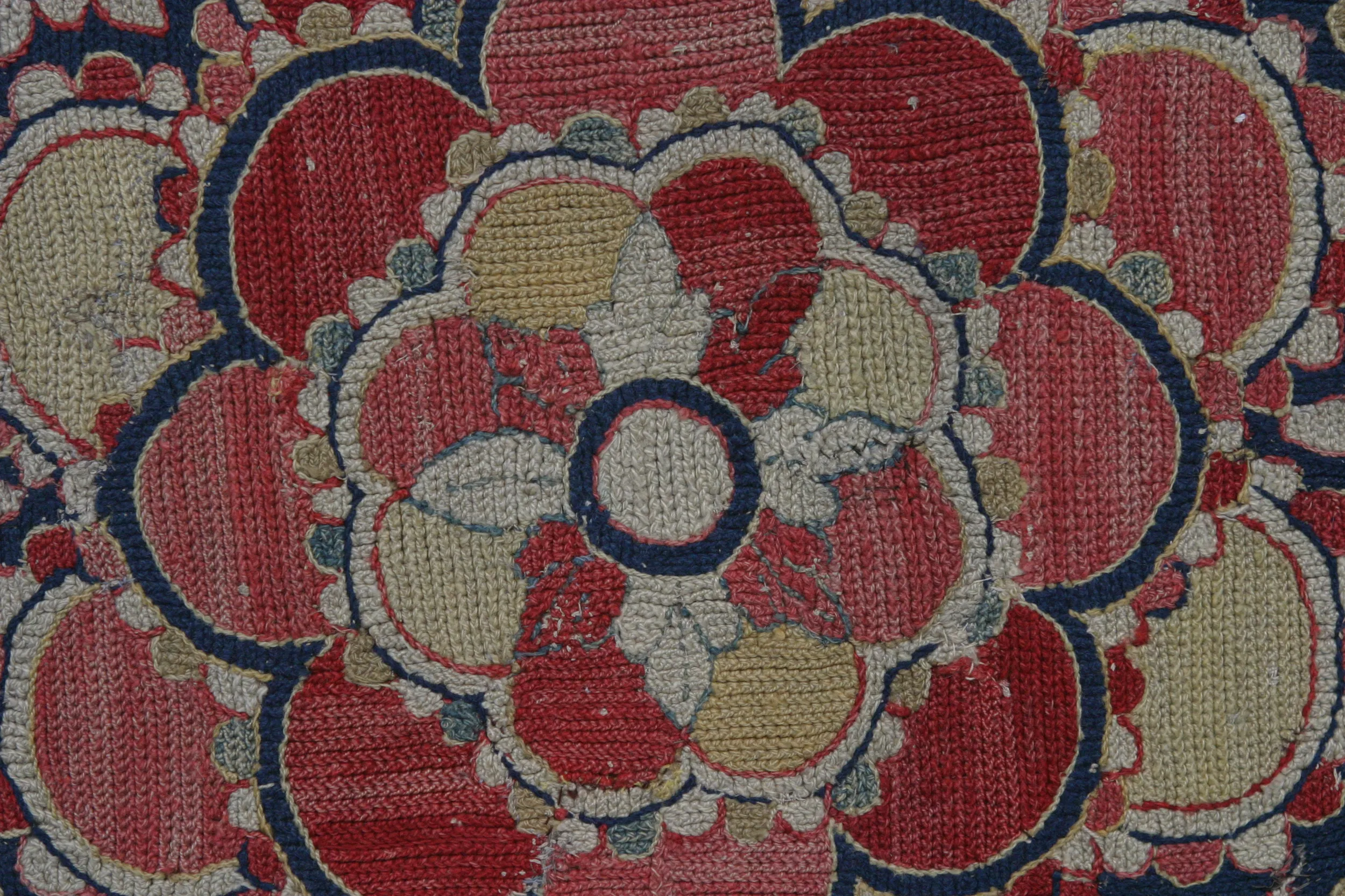GUEST: I bought it in New York. And as an interior designer, I did a lot of shopping in New York. I went up there from Atlanta. And I was in this rug shop, and the owner said he thought I had a good eye, he had something he wanted to show me. And he brought out this tapestry. And I thought it was so unusual, and I've never seen anything like it.
APPRAISER: Did he tell you what he thought it was?
GUEST: He acquired it from a Polish family in Manhattan. It had been in their family from several generations.
APPRAISER: Well, first of all, it's drop-dead gorgeous.
GUEST: Thank you.
APPRAISER: The monumental drawing, the colors, everything about it is wonderful. But I don't think it's Polish. I think it's Portuguese. The Portuguese didn't make pile rugs. They only did these embroidered pieces, these needlework pieces.
GUEST: Yes.
APPRAISER: And this is what we call long-arm cross-stitch. And one of the reasons that it's so unusual in the drawing of the design is because it's very old. I think it's probably early 19th century. And it's in very, very good condition. It's possible that this piece was used on the floor at some point, because although it's in very good condition, the only wear you see is right here in the center. Of course, it shouldn't have been on the floor, and it would never be now.
GUEST: Right.
APPRAISER: But the dyes have stayed true, they're natural dyes, and whatever fading has occurred only seems to enhance the design.
GUEST: Great.
APPRAISER: Do you mind telling me what you paid for it?
GUEST: I believe I paid $3,400 for it.
APPRAISER: $3,400. And you probably fell in love with it.
GUEST: I did, that's right.
APPRAISER: You didn't care how much it cost you.
GUEST: Because I knew it was unusual. And I thought it was valuable.
APPRAISER: And you thought it was valuable.
GUEST: Yeah.
APPRAISER: Well, I think it's valuable, too.
GUEST: Oh, good.
APPRAISER: I think in today's market, it would sell for about $20,000.
GUEST: Wow.
APPRAISER: It's just a glorious piece.
GUEST: Thank you.











